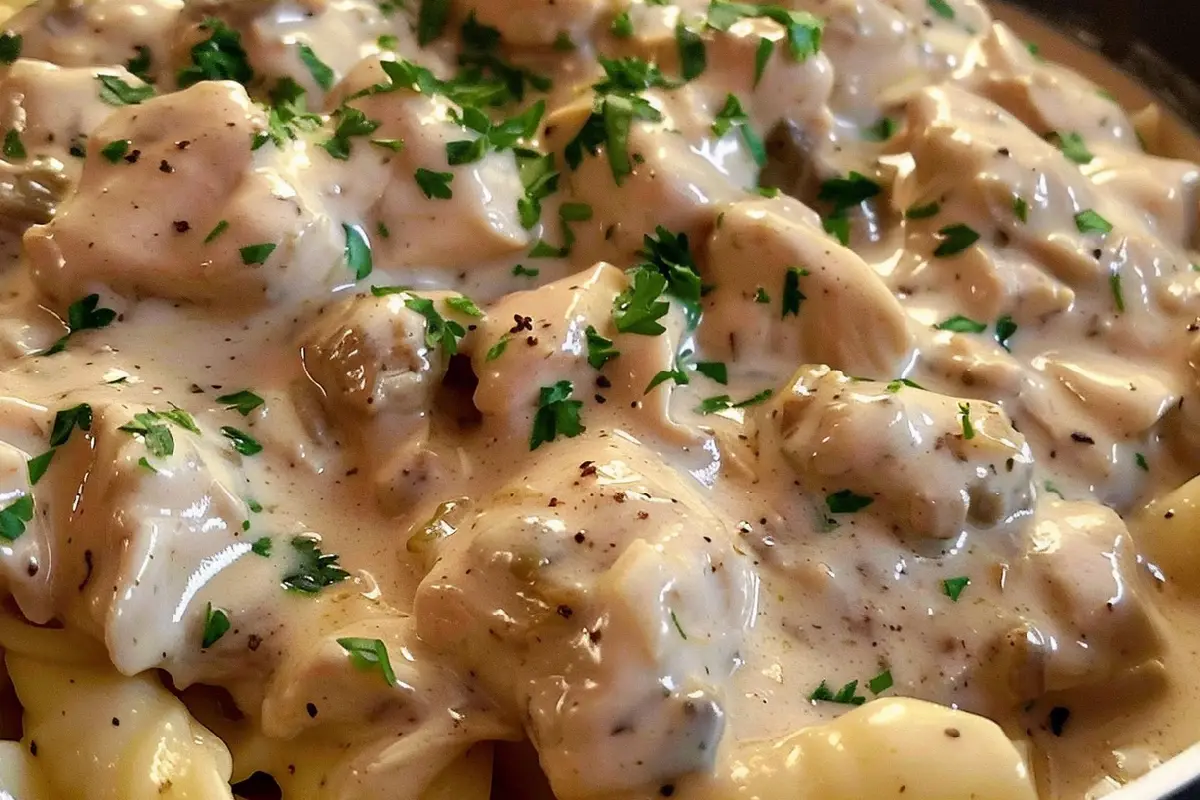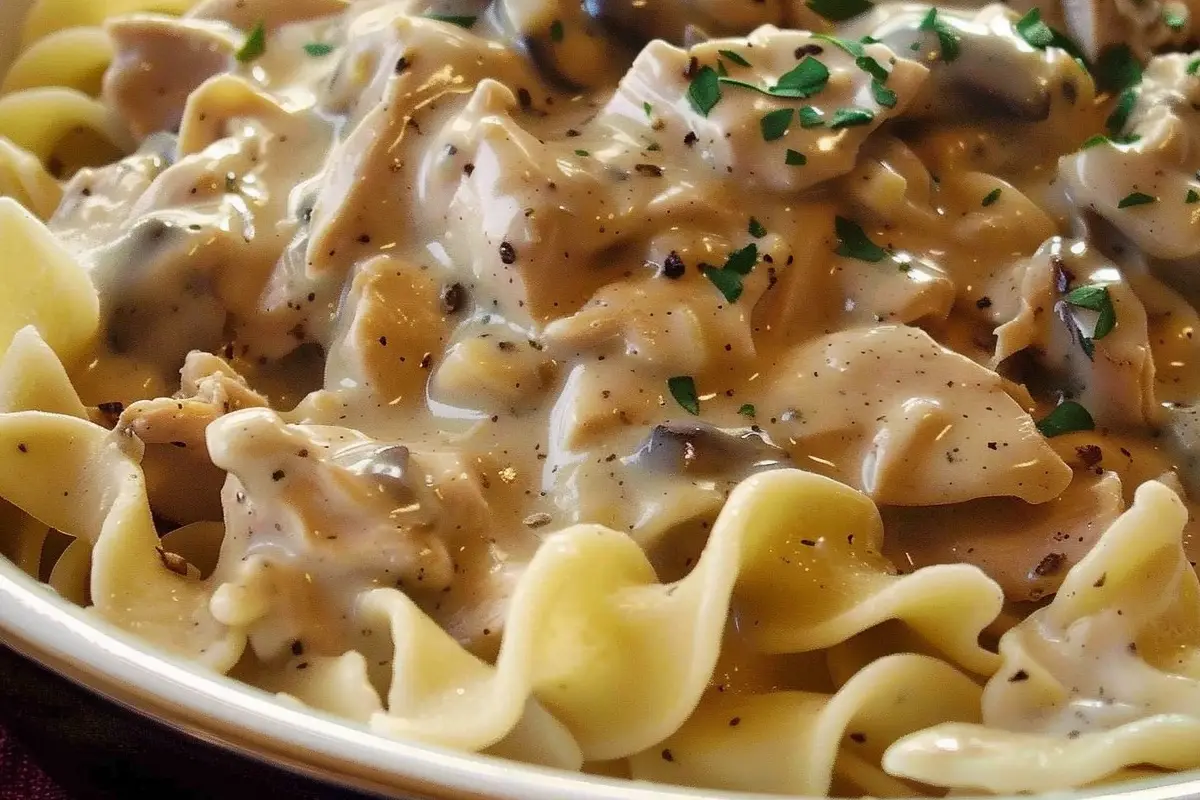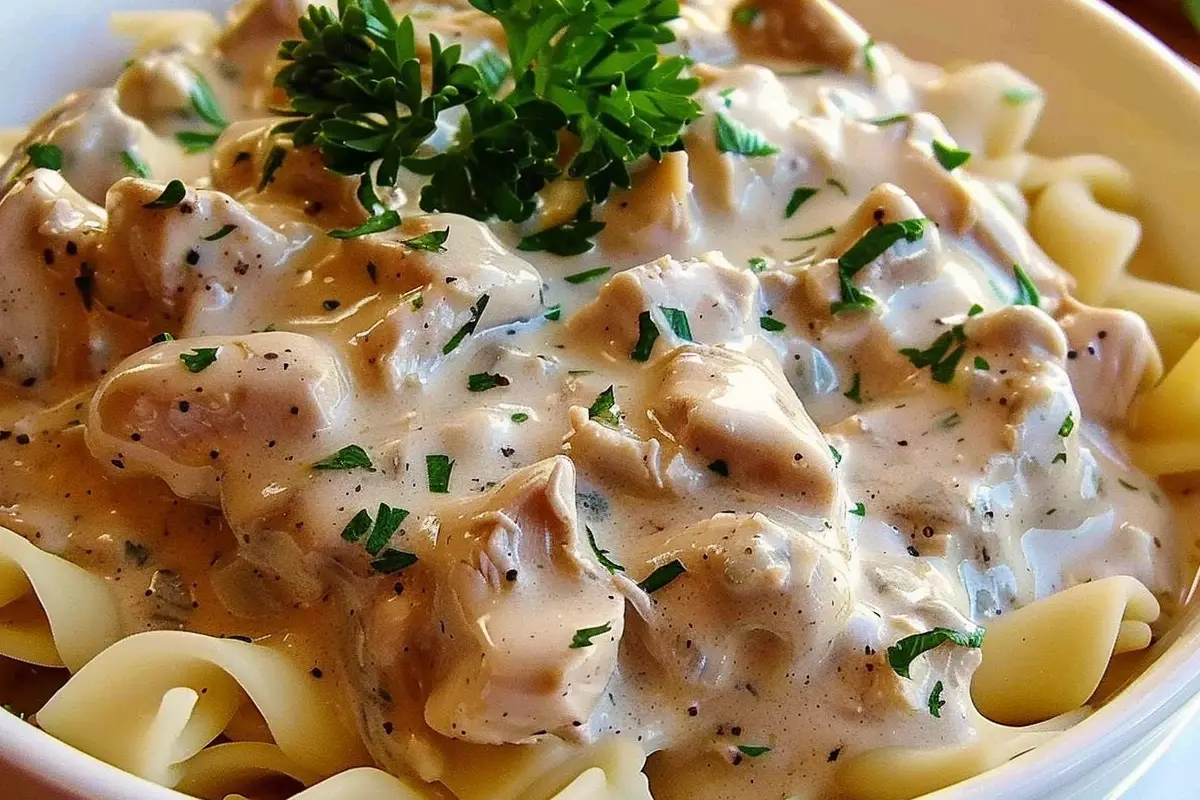A slow cooker is a beloved kitchen appliance known for its ability to cook delicious meals with minimal effort. By using a low and steady heat over an extended period, it breaks down tough cuts of meat and allows the flavors to meld beautifully. However, while slow cookers are versatile, not every ingredient is suited to this type of cooking. Adding the wrong components can lead to poor texture, unappealing flavors, or even food safety issues. Knowing what to avoid is crucial to achieve the best results with your slow cooker.
To learn more about slow cooking and the right ingredients, consider reading this guide on cheesy mashed potatoes, which provides tips on adding dairy components that work best in classic dishes.
Why Some Foods Should Not Be Used in a Slow Cooker
The principle of slow cooking involves low, consistent heat over many hours. This cooking method is perfect for tenderizing tough cuts of meat but can be detrimental to other ingredients. Some foods may turn mushy, become bitter, or even develop unsafe characteristics when not cooked properly in a slow cooker. Knowing what ingredients to avoid and how to use them can make all the difference between a successful meal and a culinary disaster.
If you want to experiment with different textures and flavors, consider learning more through this tangy deviled eggs recipe, which illustrates the importance of timing and ingredient placement.
Foods You Should Never Put in a Slow Cooker
1. Dairy Products
Dairy products such as milk, cream, yogurt, and sour cream should be handled with caution when using a slow cooker. When subjected to the low and extended cooking times, dairy tends to curdle and separate, creating a grainy, unappealing texture.
- Why It’s a Problem: The high fat content in dairy products like cream and milk can cause the liquid to break, resulting in an undesirable, curdled mixture.
- Solution: Add dairy products only during the last 30 minutes of cooking. This method prevents them from being exposed to long periods of heat.
- Alternative Options: If you need a creamy consistency, consider using coconut milk, evaporated milk, or making a flour-based roux separately to stir in at the end.
2. Pasta and Rice
Adding pasta or rice directly to a slow cooker might sound convenient, but it’s usually a recipe for disaster. Both of these ingredients cook relatively quickly, and slow cookers’ prolonged cooking times can result in them becoming mushy, overcooked, and completely falling apart.
- Why It’s a Problem: Pasta and rice are sensitive to moisture and time. The low, steady heat of a slow cooker saturates these starches, turning them into a soggy mess.
- Solution: Cook pasta and rice separately, then add them to the slow cooker during the last hour of cooking.
- Alternative Option: If you must include them from the beginning, opt for parboiled rice, which is more resistant to breaking down over extended cooking times.
3. Delicate Vegetables (Broccoli, Asparagus, etc.)

Vegetables like broccoli, asparagus, spinach, and bell peppers can lose their texture, flavor, and color if added at the start of slow cooking. These delicate vegetables require significantly less cooking time than the average slow cooker meal, which means they will turn to mush if left in too long.
- Why It’s a Problem: Slow cookers tend to overcook delicate vegetables, making them limp and discolored. The high moisture environment can also make them lose their characteristic fresh flavor.
- Solution: Add these vegetables during the last 30 minutes of cooking to retain their texture and taste.
- Alternative Option: For vegetable-heavy recipes, consider sautéing or roasting these vegetables separately and adding them at the end for a burst of color and flavor.
4. Seafood
Seafood is generally a poor candidate for the slow cooker due to its quick cooking time. Fish, shrimp, and other seafood become tough and rubbery when exposed to the prolonged heat of a slow cooker.
- Why It’s a Problem: Seafood is delicate and requires only a few minutes to cook properly. Slow cooking tends to overcook the fish proteins, resulting in an unpleasant texture.
- Solution: If you’re incorporating seafood into a slow-cooked meal, add it during the last 15-20 minutes of cooking.
- Alternative Option: Prepare seafood separately and combine it with your slow-cooked dish just before serving for the best texture and flavor.
5. Fresh Herbs
Using fresh herbs like basil, parsley, cilantro, and chives at the beginning of slow cooking is a mistake. These herbs are sensitive to heat and lose their flavor and aroma when exposed to prolonged cooking.
- Why It’s a Problem: Fresh herbs are delicate and their essential oils evaporate quickly under the low and steady heat of a slow cooker.
- Solution: Use dried herbs at the beginning, and add fresh herbs as a garnish right before serving.
- Alternative Option: If you want a burst of herby flavor, try adding a herb oil or pesto at the end for an extra layer of freshness.
6. Lean Meats and Chicken Breast
Lean meats like chicken breast or pork loin can dry out and become tough when cooked for extended periods in a slow cooker. The lack of marbling and fat in these cuts makes them ill-suited for the low-and-slow cooking method.
- Why It’s a Problem: The low moisture and extended cooking times cause lean meats to lose their natural juices, making them dry and flavorless.
- Solution: Use fattier cuts like chicken thighs, pork shoulder, or beef chuck. If you must use lean meat, consider wrapping it in bacon or cooking it with a rich sauce.
- Alternative Option: For lean cuts, marinate them overnight or brine them to add extra moisture.
7. Alcohol
Adding wine, beer, or spirits directly into your slow cooker may seem like a way to deepen the flavors of your dish. However, because slow cookers operate at low temperatures, the alcohol does not evaporate properly, resulting in a harsh and bitter taste.
- Why It’s a Problem: Alcohol needs to be cooked at a high temperature to evaporate. When placed in a slow cooker, it stays in the dish, leaving a pungent flavor.
- Solution: Simmer alcohol in a pan before adding it to your slow cooker to reduce the potency and enhance the flavors.
- Alternative Option: Use a small amount of vinegar or citrus juice to brighten the flavor without the alcohol.
8. Raw Beans (Especially Kidney Beans)
Raw beans, especially kidney beans, contain a toxin called phytohaemagglutinin that is only neutralized when they are boiled. Simply soaking beans and placing them in a slow cooker is not enough to make them safe for consumption.
- Why It’s a Problem: Slow cookers do not reach high enough temperatures to deactivate this toxin, potentially leading to food poisoning.
- Solution: Always pre-soak and boil beans for at least 10 minutes before adding them to your slow cooker. This step ensures that the toxins are destroyed.
- Alternative Option: Use canned beans, which are pre-cooked and safe for slow cooking.
9. Frozen Ingredients
Adding frozen ingredients directly into a slow cooker can cause issues with even cooking. Frozen items reduce the temperature of the slow cooker, leading to prolonged cooking times and potential food safety risks.
- Why It’s a Problem: Frozen ingredients can keep the temperature in the “danger zone” (40°F – 140°F) for too long, increasing the risk of bacterial growth.
- Solution: Always thaw frozen ingredients thoroughly before adding them to the slow cooker.
- Alternative Option: If you’re in a hurry, use fresh ingredients instead of frozen.
10. Bread and Pastries
Although it may be tempting to try baking in a slow cooker, bread and pastries generally do not turn out well. The moist environment prevents these items from forming a crisp crust, resulting in a soggy texture.
- Why It’s a Problem: Bread and pastries need dry heat to develop their characteristic texture. The steamy environment of a slow cooker makes them gummy and undercooked.
- Solution: If you want to include bread, use stale bread for making puddings, or toast it before adding it to your slow cooker.
- Alternative Option: For baked goods, use a regular oven or consider making bread-based dishes like stuffing that thrive in a moist environment.
Common Slow Cooker Mistakes to Avoid
1. Adding Too Much Liquid
One of the most common mistakes when using a slow cooker is adding too much liquid. Because slow cookers operate at low temperatures and have a tightly sealed lid, very little moisture evaporates during cooking. This retention of moisture means that dishes cooked in a slow cooker often need less liquid than conventional cooking methods.
- Why It’s a Problem: Excess liquid can cause your dish to turn out watery and bland. For dishes like stews and soups, it can dilute the flavors.
- Solution: Start with half the liquid recommended in standard recipes. Remember that ingredients like vegetables and meat release liquid during cooking, which adds to the overall volume.
- How to Fix It: If your dish ends up too watery, remove the lid during the last 30 minutes of cooking to allow some liquid to evaporate. Alternatively, thicken the sauce with a cornstarch slurry or mashed vegetables.
2. Overfilling the Slow Cooker
It might be tempting to fill your slow cooker to the brim, especially if you’re cooking for a crowd. However, overfilling the slow cooker can lead to uneven cooking, longer cooking times, and potentially, a messy overflow.
- Why It’s a Problem: When the slow cooker is filled beyond its recommended capacity (usually no more than two-thirds full), the heat cannot circulate properly, which results in undercooked or overcooked ingredients.
- Solution: Follow the manufacturer’s guidelines for maximum fill levels, usually listed in the instruction manual. When in doubt, avoid filling your slow cooker more than two-thirds full.
- How to Fix It: If you have too much food, consider splitting the recipe into two batches or using a larger slow cooker.
3. Not Layering Ingredients Properly
The order in which you place ingredients in a slow cooker affects how evenly they cook. Dense ingredients, like meat and root vegetables, take longer to cook, while lighter ingredients, such as leafy greens and seafood, cook more quickly.
- Why It’s a Problem: If you don’t layer ingredients correctly, the items at the bottom may overcook, while the items on top remain undercooked.
- Solution: Place dense vegetables (like carrots, potatoes, and turnips) and meat at the bottom. Layer softer vegetables and other ingredients on top to ensure they cook evenly.
- How to Fix It: If layering was not done properly, consider stirring the ingredients midway through cooking or adjusting the heat settings.
4. Using the Wrong Cut of Meat
Slow cookers are ideal for cooking tougher cuts of meat because the low and slow cooking process breaks down the collagen and connective tissues, making the meat tender and juicy. However, using leaner cuts like chicken breast or pork tenderloin can result in dry, stringy meat.
- Why It’s a Problem: Lean cuts lack the fat and connective tissue that keep the meat moist during long cooking times.
- Solution: Choose fattier cuts like beef chuck, pork shoulder, or chicken thighs. These cuts benefit from long, slow cooking and become tender over time.
- How to Fix It: If you’ve already used a lean cut, try adding a sauce or broth to reintroduce moisture. You can also shred the meat and mix it back into the cooking juices for a better texture.
5. Ignoring Cooking Times and Temperature Settings
Each dish has an optimal cooking time and temperature. Using the wrong setting or cooking for too long can result in overcooked or undercooked food. While it may seem that the low setting can be used indefinitely, this approach can often dry out certain ingredients or turn vegetables to mush.
- Why It’s a Problem: Cooking times vary based on ingredient type, size, and density. Ignoring these factors can lead to unevenly cooked dishes.
- Solution: Follow the recipe’s suggested cooking times and use a meat thermometer to check the internal temperature of meat-based dishes.
- How to Fix It: If you suspect that the dish is overcooked, switch to warm mode to prevent further cooking. For undercooked dishes, adjust the heat to high and extend the cooking time as needed.
Additional Ingredients to Avoid in a Slow Cooker
1. Whole Spices
While adding whole spices like cinnamon sticks, cloves, and peppercorns can enhance the flavor of your dishes, slow cookers don’t provide the high heat needed to release the full potential of these spices. As a result, they may not impart as much flavor as expected.
- Why It’s a Problem: Whole spices need high, direct heat to release their essential oils. In a slow cooker, the long cooking time can make these spices bitter.
- Solution: Use ground spices instead of whole spices, or add whole spices during the last hour of cooking.
- Alternative Option: Toast whole spices in a pan before adding them to the slow cooker to enhance their flavor.
2. Soft Cheese
Soft cheeses like brie, camembert, and cream cheese tend to break down and separate when exposed to prolonged heat. While it might be tempting to add these for a creamy texture, they usually end up creating a gritty consistency instead.
- Why It’s a Problem: The moisture and fat content in soft cheese makes them prone to curdling in a slow cooker.
- Solution: Use hard cheeses like cheddar or parmesan, which melt more evenly and maintain their structure.
- Alternative Option: Add soft cheeses after the cooking process and stir until just melted.
3. Egg-Based Sauces and Custards
Eggs are sensitive to heat and cook very quickly. Using a slow cooker for egg-based dishes like custards, quiches, or hollandaise sauce can result in a rubbery, overcooked texture.
- Why It’s a Problem: Egg-based mixtures need precise temperature control, which is difficult to achieve in a slow cooker.
- Solution: Cook these dishes using a bain-marie (water bath) technique in the oven for more even heat distribution.
- Alternative Option: Use a low-heat setting and monitor closely, or choose egg dishes specifically designed for slow cookers.
4. High-Starch Foods Without Liquid
Starchy foods like beans, lentils, and cornmeal need a sufficient amount of liquid to cook evenly. Without enough moisture, these ingredients can remain undercooked or develop a chalky texture.
- Why It’s a Problem: Starches absorb liquid as they cook. If there’s not enough liquid in the pot, the starch will not soften properly.
- Solution: Always use a 1:3 ratio of starch to liquid when adding high-starch ingredients to a slow cooker.
- How to Fix It: If your dish is undercooked, add more liquid and continue cooking on high until the starch is fully cooked.
5. Tomatoes and Acidic Ingredients
While tomatoes and other acidic ingredients add a bright flavor to dishes, they can also prevent other ingredients, particularly beans, from cooking properly. The acidity in tomatoes and vinegar can harden beans and make them tough.
- Why It’s a Problem: Acids can interfere with the gelatinization of starches and proteins, resulting in tough textures.
- Solution: Add acidic ingredients during the last hour of cooking to avoid interfering with the cooking process.
- Alternative Option: Consider using low-acid tomato varieties or adding a pinch of baking soda to neutralize the acidity.
FAQs About What Can You Not Put in a Slow Cooker

1. Can You Put Raw Chicken in a Slow Cooker?
Yes, you can put raw chicken in a slow cooker, but it’s important to layer it correctly and make sure it reaches a safe internal temperature. For best results, place raw chicken at the bottom of the slow cooker where it will be exposed to the most heat.
2. Why Do Potatoes Stay Hard in a Slow Cooker?
Potatoes often stay hard if the cooking temperature is too low or if they are cut into large chunks. Try cutting them into smaller pieces and placing them at the bottom of the slow cooker, where they’ll receive the most direct heat.
3. Can I Add Milk to a Slow Cooker?
Adding milk or cream early in the cooking process will cause it to curdle. Add dairy products only during the last 30 minutes of cooking to maintain a smooth texture.

